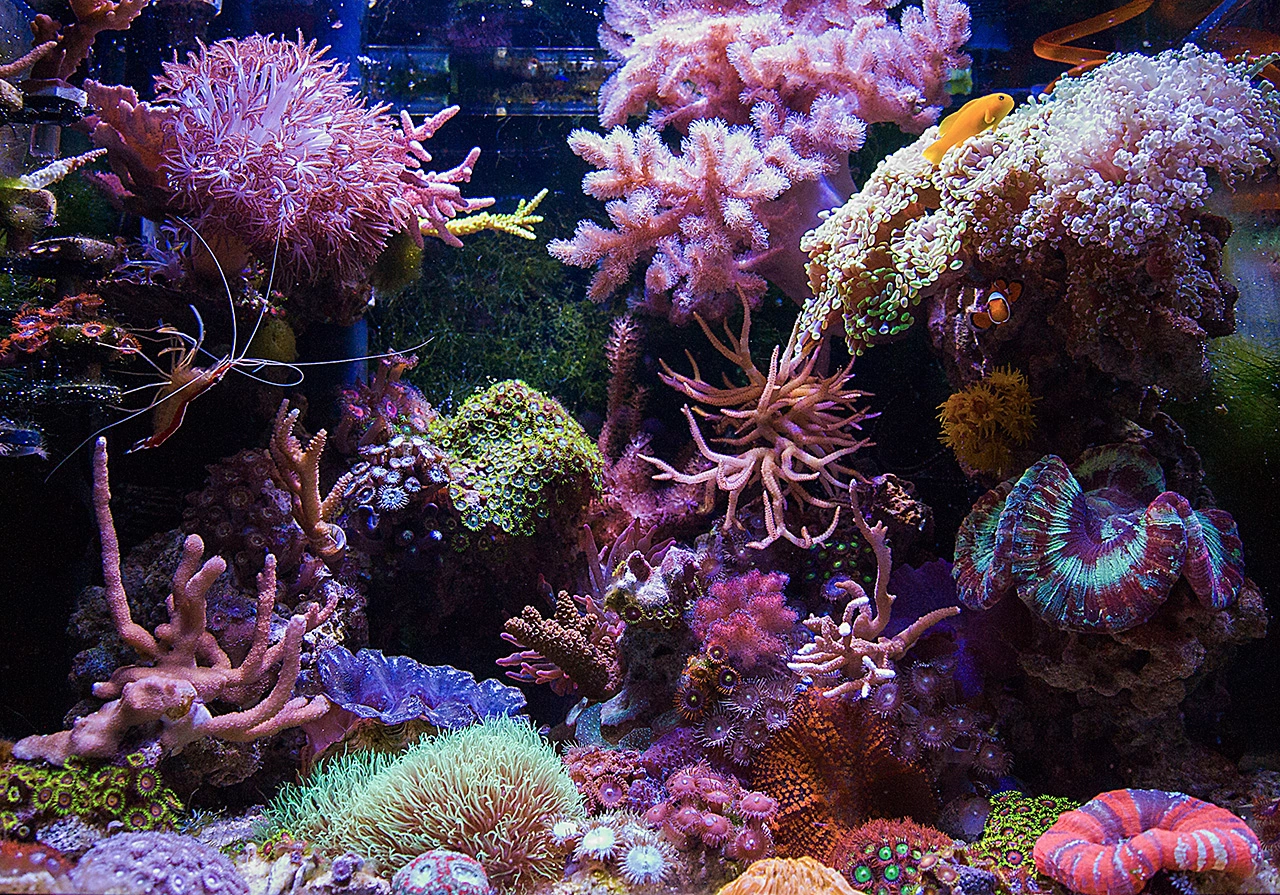Stunning 15-Gallon Reef Tank – ReeferBoo's TOTM | NanoReef

Tank Specifications
Volume: 15 Gallons / 56 Liters
Dimensions (L × W × H):
24.0" ×
13.0" ×
13.0"
61.0cm ×
33.0cm ×
33.0cm
Equipment List
- Salt: Red Sea
Frequently Asked Questions
What is the maintenance routine for my reef tank?
To maintain a healthy reef tank, I adhere to the KISS Principle by keeping things simple and focusing less on chasing perfect water parameters. I check salinity and temperature daily, clean the glass as needed, and change the filter floss weekly. Chemical media is replaced every two weeks. Water changes are done every 2 to 3 days, typically between one half and one US gallon.
How do I maintain the salinity and temperature levels in my reef tank?
Salinity should be maintained at 1.025. I check it daily using a refractometer. Temperature is kept between 75 to 77°F in winter and 77 to 78°F in summer. A reliable heater, like the Eheim Jager 50w, helps maintain consistent temperature.
What are the key water parameters to monitor in a reef tank?
While I don't obsess over every parameter, I do monitor salinity, temperature, pH (around 8.2), nitrate (preferably <0.25 ppm), and phosphate (ideally <0.04 ppm). Regular water changes help keep these levels stable.
What is the feeding schedule for the fish in my reef tank?
For the clownfish and goby, I feed various pellets every 2 days. The banggai cardinal gets frozen food every 2 days as well. Additionally, I broadcast feed Reef Chilli once a week the night before a water change and manually feed prepared frozen food to the LPS corals 1 to 2 times a week.
How do I effectively feed corals in my reef tank?
Feeding corals can be done by manually administering prepared frozen food 1 to 2 times a week. It's beneficial to target feed LPS corals like Trachyphyllia and Scolymia to ensure they receive enough nutrients to thrive.
What fish species are suitable for a 15-gallon nano reef tank?
In my nano reef tank, I keep a captive bred misbar Ocellaris clownfish, a yellow clown goby, and a captive bred Banggai cardinal. When stocking your tank, consider fish size, behavior, and compatibility to avoid aggression and overcrowding.
How do I choose corals for my reef tank?
Choose corals based on their compatibility with each other and the lighting and flow requirements of your setup. For example, I have SPS, LPS, and soft corals, and I make sure to place them according to their needs to avoid competition or shading.
How should I plan my aquascape in a small reef tank?
In a small tank, maximizing space is key. I researched various configurations and aimed to create depth using smaller pieces of live rock and coral. Arrange the corals at different heights and provide open spaces for better flow and light penetration.
What type of filtration system works well for a nano reef tank?
I use an AquaClear 110 HOB filter with a refugium modification. This setup allows for excellent mechanical and biological filtration while being simple and easy to access, making maintenance and tuning easier.